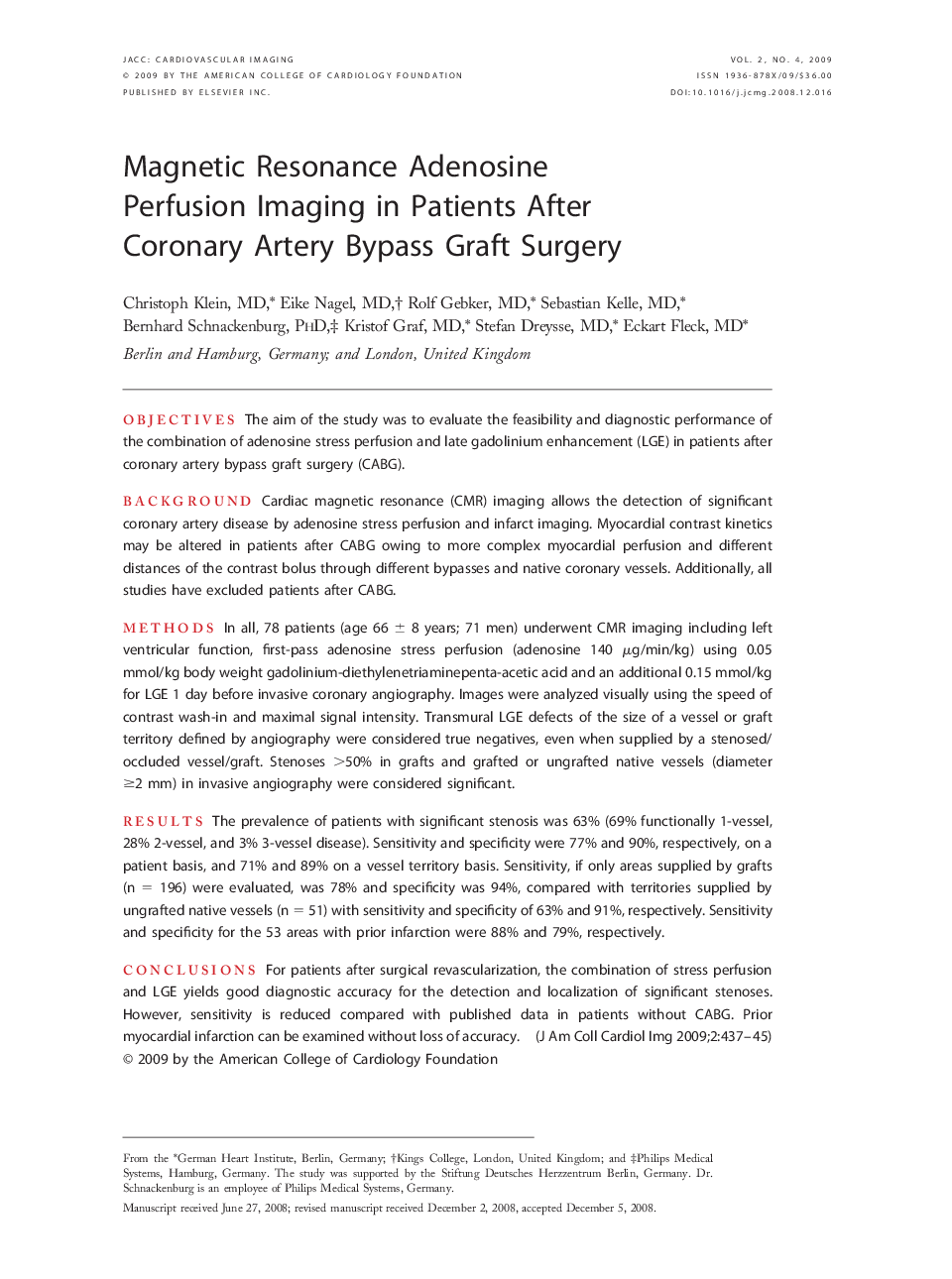| کد مقاله | کد نشریه | سال انتشار | مقاله انگلیسی | نسخه تمام متن |
|---|---|---|---|---|
| 2938837 | 1176959 | 2009 | 9 صفحه PDF | دانلود رایگان |

ObjectivesThe aim of the study was to evaluate the feasibility and diagnostic performance of the combination of adenosine stress perfusion and late gadolinium enhancement (LGE) in patients after coronary artery bypass graft surgery (CABG).BackgroundCardiac magnetic resonance (CMR) imaging allows the detection of significant coronary artery disease by adenosine stress perfusion and infarct imaging. Myocardial contrast kinetics may be altered in patients after CABG owing to more complex myocardial perfusion and different distances of the contrast bolus through different bypasses and native coronary vessels. Additionally, all studies have excluded patients after CABG.MethodsIn all, 78 patients (age 66 ± 8 years; 71 men) underwent CMR imaging including left ventricular function, first-pass adenosine stress perfusion (adenosine 140 μg/min/kg) using 0.05 mmol/kg body weight gadolinium-diethylenetriaminepenta-acetic acid and an additional 0.15 mmol/kg for LGE 1 day before invasive coronary angiography. Images were analyzed visually using the speed of contrast wash-in and maximal signal intensity. Transmural LGE defects of the size of a vessel or graft territory defined by angiography were considered true negatives, even when supplied by a stenosed/occluded vessel/graft. Stenoses >50% in grafts and grafted or ungrafted native vessels (diameter ≥2 mm) in invasive angiography were considered significant.ResultsThe prevalence of patients with significant stenosis was 63% (69% functionally 1-vessel, 28% 2-vessel, and 3% 3-vessel disease). Sensitivity and specificity were 77% and 90%, respectively, on a patient basis, and 71% and 89% on a vessel territory basis. Sensitivity, if only areas supplied by grafts (n = 196) were evaluated, was 78% and specificity was 94%, compared with territories supplied by ungrafted native vessels (n = 51) with sensitivity and specificity of 63% and 91%, respectively. Sensitivity and specificity for the 53 areas with prior infarction were 88% and 79%, respectively.ConclusionsFor patients after surgical revascularization, the combination of stress perfusion and LGE yields good diagnostic accuracy for the detection and localization of significant stenoses. However, sensitivity is reduced compared with published data in patients without CABG. Prior myocardial infarction can be examined without loss of accuracy.
Journal: JACC: Cardiovascular Imaging - Volume 2, Issue 4, April 2009, Pages 437–445